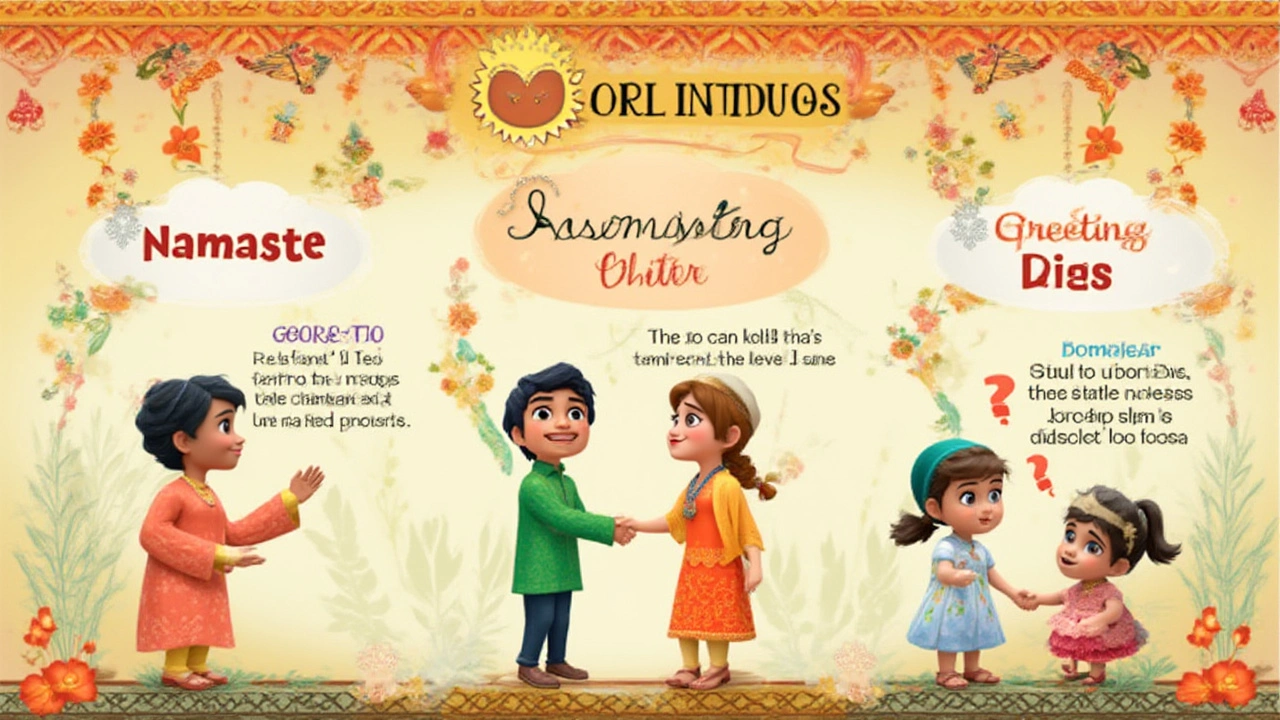
If you think greetings are just mindless words, think again. The way we say 'hello' or 'hi' sets the vibe for almost every encounter. From awkward elevator rides to those oh-no-not-this-relative-again dinners, those first few words can build a bridge or put up a wall. And believe it or not, your choice of greeting can totally change the way people respond to you. It’s not just about good manners—sometimes it’s a silent power play or a sign of deeper culture. So why do we always default to the same old lines, and what makes three greetings stand out from the crowd? There’s a lot more packed into a simple hello than most people realize. Let’s unpack the details—the real meaning, when to use which greeting, and some jaw-dropping stories from around the world.
The Three Most Common Greetings: What They Really Mean
When most people think of greetings, their minds jump straight to 'hello', 'hi', and maybe a quick 'hey'. But why do these work nearly everywhere? It’s partly because they’re short and universal, but there's more to it. Every greeting has its own flavor. For example, 'hello' is the formal classic. It’s like a little black dress—works almost anywhere, never too much, never too little. Kids might find it boring, but it’s super dependable in situations where you don’t know the other person well, like meeting a new teacher or when answering the phone at work.
Then there's 'hi'. It drops the formality and lands right in the middle. Not too stiff, but not super chill either. You'll notice that people use 'hi' as a safe bet, especially in text messages, emails, or when bumping into someone familiar but not close. It feels lighter and more approachable, and people often smile when they say it—a subtle psychological trick that immediately puts others at ease.
And finally, 'hey'. This one's all about being casual. Friends, siblings, and people who want to sound laid-back go for 'hey'. In the last decade, it's exploded on social apps and in memes. 'Hey' can sound playful, or, if said in a certain way, kind of annoyed. It’s super versatile—tone is everything. Use it with someone older and they might side-eye you, but your best friend will fire back with an even more dramatic 'heyyyy'. Funny enough, studies in linguistics have shown that people tend to remember the first words spoken in a conversation best, especially with informal greetings—it sets the whole mood.
It’s wild to think that these three words, with just a letter or two of difference, can totally shift your social energy. And that’s before you even look at what happens beyond English. Go to Japan, and you’re expected to bow while saying "Konnichiwa"; in Italy, a hug and two cheek kisses often replace words; and in South Africa, the Zulu 'Sawubona' literally means 'I see you', which is way deeper than just a hi. More so, these greetings carry weight in diplomacy too—when Obama greeted Queen Elizabeth II with a simple "Hello, Your Majesty,” newspapers around the world obsessed over etiquette for weeks.

Facts, History, and Worldwide Spin on Greetings
If you think 'hello' is as old as time, get this—the word 'hello' really only became common after the invention of the telephone. Back in 1877, when Thomas Edison was testing his new phone, he suggested answering with 'Hallo!' Alexander Graham Bell, his rival, wanted people to answer with 'Ahoy!' (which honestly sounds way more dramatic). 'Hello' stuck, though. Now billions of phone calls every year start with that word.
'Hi' wasn’t even a greeting originally—it popped up in the 1860s as a shout to attract attention. Imagine someone yelling 'Hi!' instead of 'Hey!' at their dog or a friend across the field. Only later did it settle into the everyday language as a mild greeting. 'Hey' goes waaaay, way back, showing up in English as early as the 1200s, mostly to call someone or show surprise.
It’s not all words, though. Non-verbal greetings pack just as much punch. Across the world, kisses, bows, and fist bumps all function as greetings. If you want a crash course in cross-cultural confusion, try hugging a British person in a business meeting. You’re more likely to get an awkward cough than a warm reception. In places like India, a polite 'Namaste' with pressed palms is more respectful than any hug. Check out this little chart to see how the world greets each other:
| Country | Common Greeting | Custom |
|---|---|---|
| Japan | Konnichiwa | Bowing |
| France | Bonjour | Kiss on both cheeks |
| South Africa | Sawubona | Direct eye contact |
| Russia | Zdravstvuyte | Firm handshake |
| Brazil | Oi | Hug or cheek kiss |
| India | Namaste | Palms pressed together |
Switching up your greeting can make or break exchanges abroad. Business etiquette even gets changed by greetings. If you visit Dubai, it's considered rude to greet someone of the opposite gender with a handshake—they usually wait for a cue instead.
There’s another layer too. Greetings signal status, group identity, and even hidden meanings. Ever noticed older folks prefer 'good morning' while younger crowds stick to 'hey'? Part of it is tradition, but there’s psychology behind it. People who use formal greetings are often perceived as more polite or trustworthy, while casual greetings can come off as open or rebellious. Context is king—drop a 'hey' at a wedding and most grandmothers will scowl.
For the stats lovers out there, Microsoft ran a study in 2023 that showed email open rates jump by 18% when messages start with a greeting personalized to the recipient (“Hi Samantha!” vs just “Hi”). So yes, the vibe you send out with your greeting really does bounce right back at you.

Tips for Getting Greetings Just Right
Ready to level up your greeting game? It’s all about matching the right word to the right vibe. If in doubt, go with 'hello'. In tricky social situations—job interviews, meeting someone’s parents for the first time, or even joining a new group—'hello' is your friend. You probably won’t offend anyone, and you might even win a few points for being polite.
- Read the room. If everyone’s going ‘hey’, a formal 'hello' might make you seem stiff. On the flip side, leading with a too-casual 'hey' in a serious setting can make you look out of place.
- Use body language. Pair your greeting with a genuine smile—science says people remember faces and smiles more than words. A 2022 experiment from York University found that people greeted by a smiling face rated the interaction 30% more positively, regardless of the actual greeting used.
- Mix it up. Too much repetition gets boring. Rotate your greetings to suit the occasion and the person. Give a 'hi' to your neighbor, a 'hey' to your friend, or throw in a bright 'good afternoon' to stand out.
- Traveling or messaging people from another country? Take five minutes to learn their greeting customs. It prevents all kinds of awkward mishaps (like bowing too deeply or reaching for a handshake that isn’t coming).
- Be attentive. If someone greets you with extra warmth—say, a double-length 'heyy' or a fist bump—return the same energy. Mirroring greetings creates instant rapport.
Some greetings have trends and shelf lives. Remember when everyone was texting 'sup?' or 'yo'? Now, these show up mostly in ironic memes or as private jokes. Language never sits still, and the way we greet each other changes with each generation. Don’t be shy to try out new greetings if the vibe feels right. Sometimes, you’ll find a new way to connect—one that sticks better than the old classics.
Looking back, it turns out greetings say a lot more about us than the words themselves. Every time you throw out a 'hi' or a 'hello', you’re giving little clues about who you are, how you feel, and how you want to be seen. Get them right, and doors open; get them wrong, and everything feels off. Who knew that three tiny greetings could hold so much power?